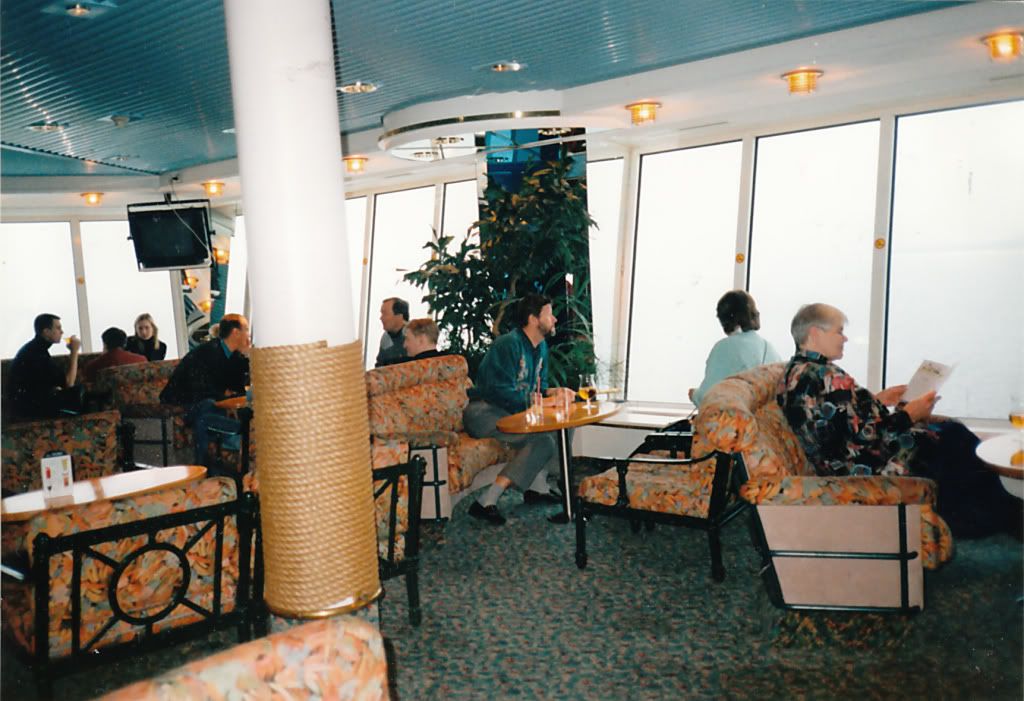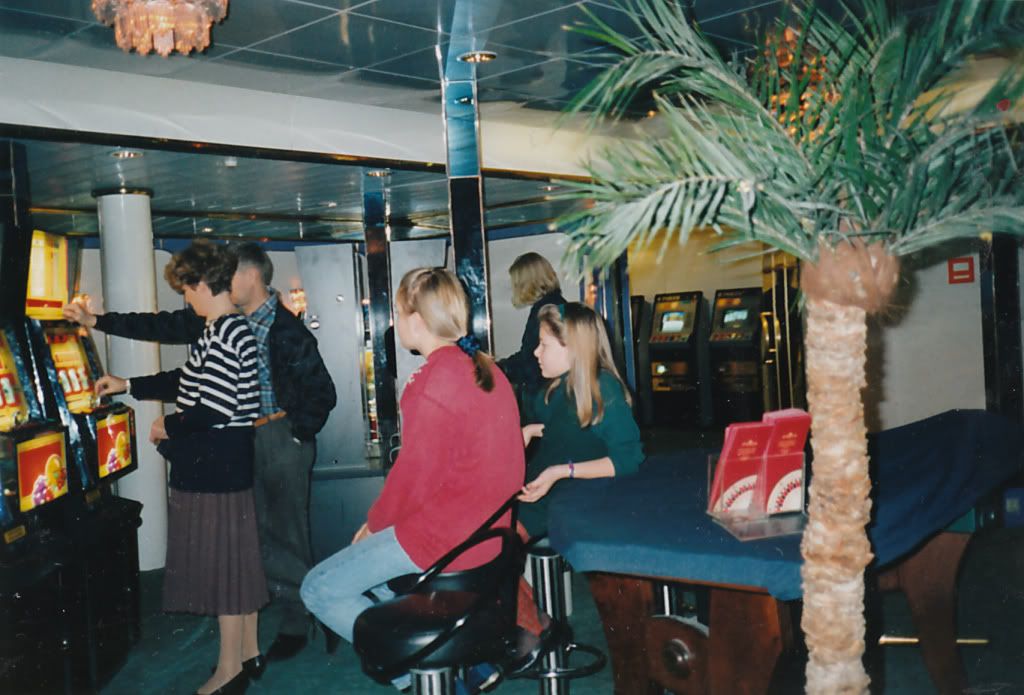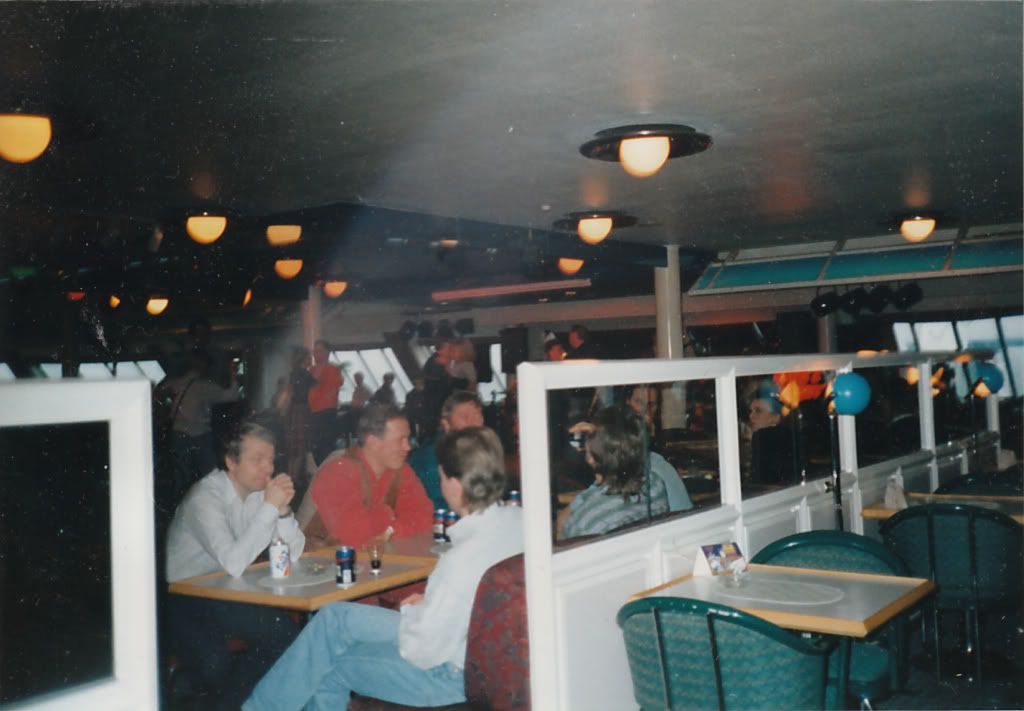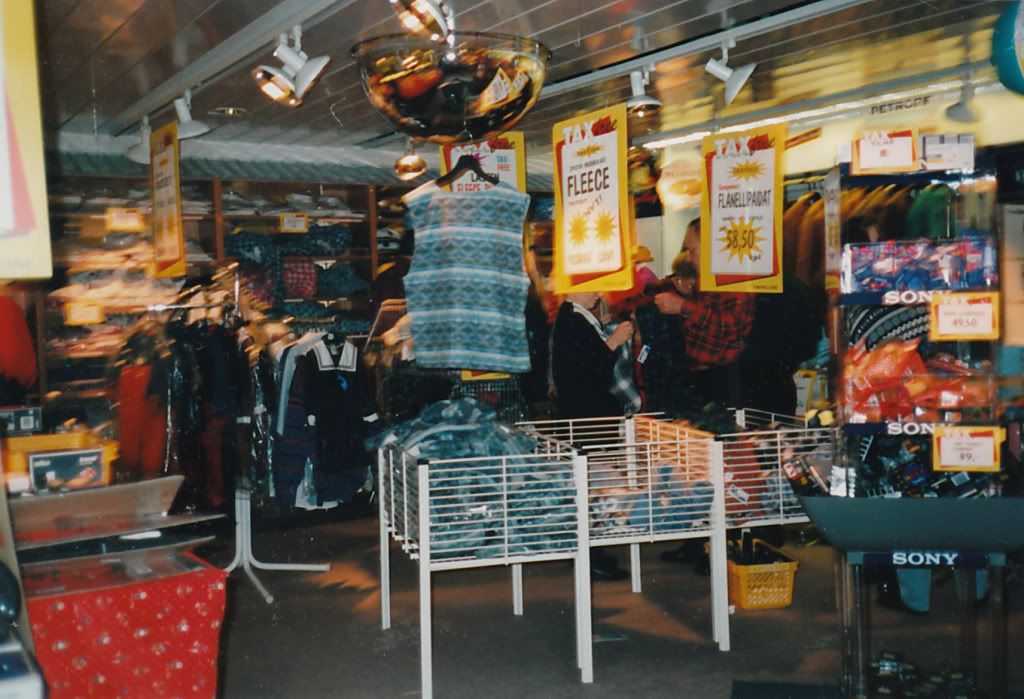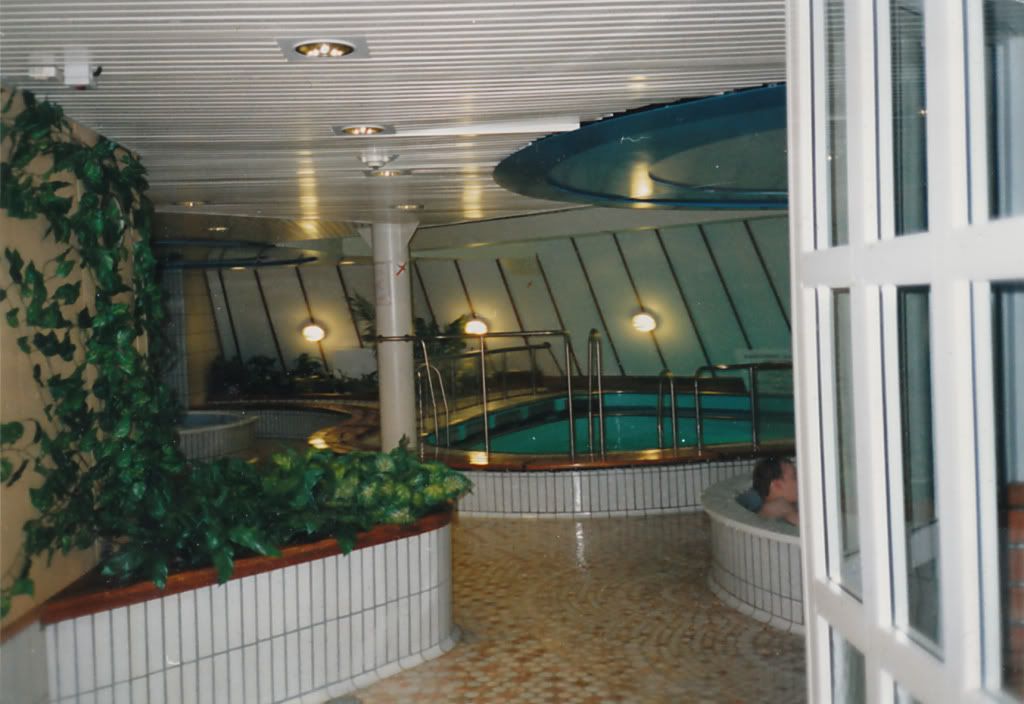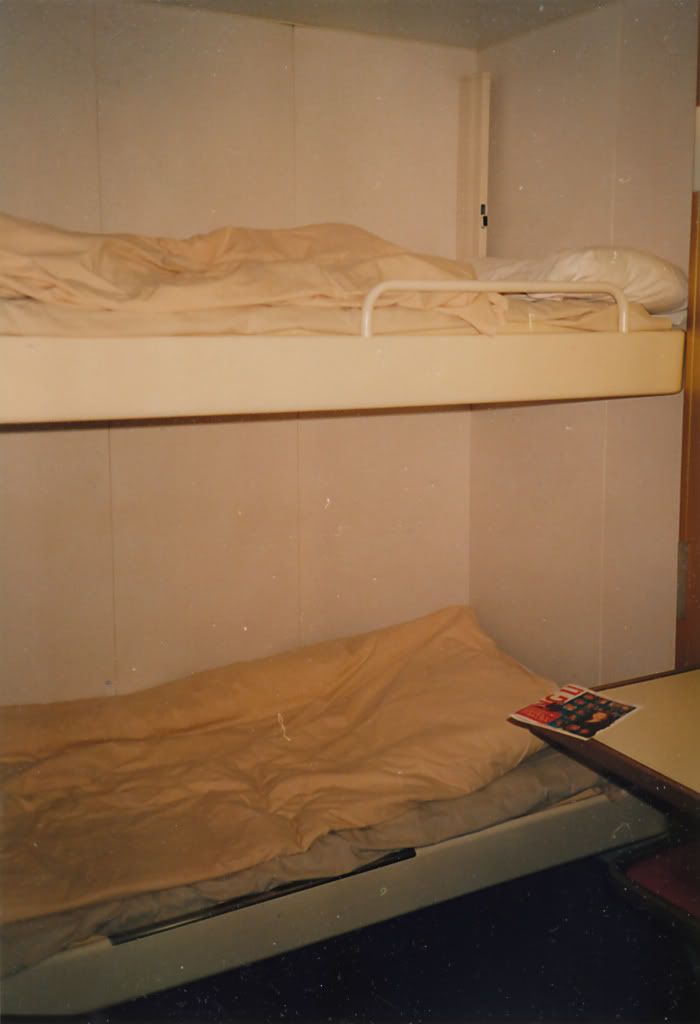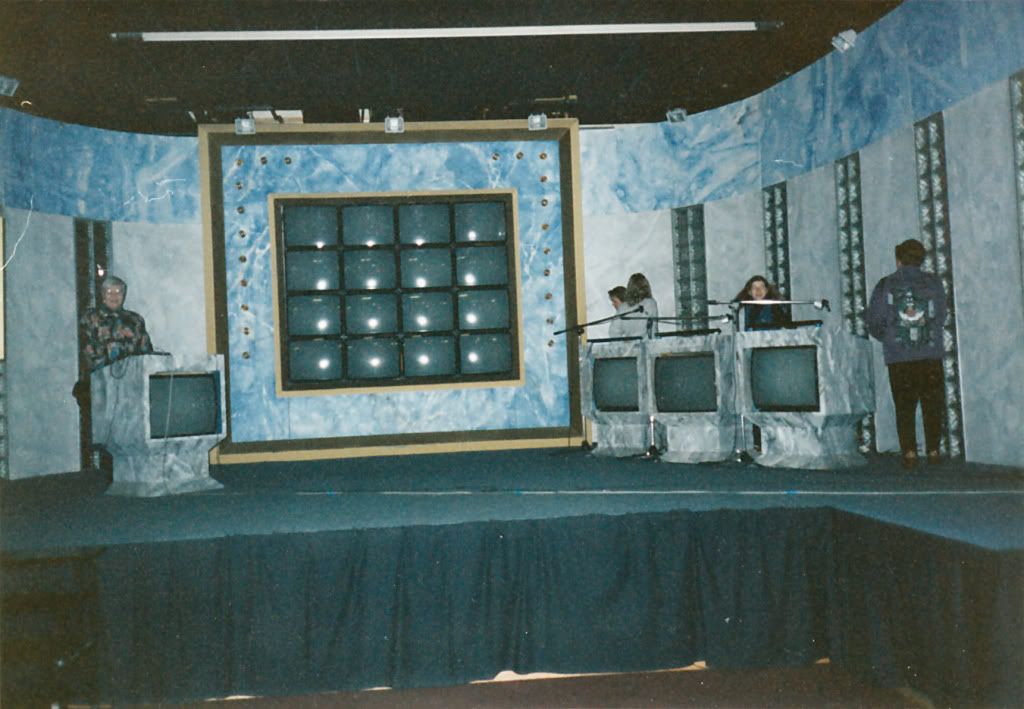I've recently been reading a lot of books related to the history of
Finnlines and Finland Steamship Company/Effoa for my under-construction Master's Thesis. Amongst these books is Matti Pietikäinen's absolutely brilliant recent
From High Arctic to Antarctica: Ships of the Thom Companies in the Seven Seas. In addition to ships owned by the Thom companies (Thombrokers, Thomesto and Thominvest - all are the same company who changed their name along the way) Pietikäinen writes about a variety of related things, amongst them the process by which the current Finnlines decided their livery in 1990, when the company was demerged from Effoa (who had owned Finnlines since 1982, when the previous owners Enso-Gutzeit sold it).
As those of you who have read this blog regularly will probably know, the current livery of Finnlines is like in the image below. White superstructure, blue hull, white funnel. Quite stylish, but a bit generic.
 |
| Finnmaid at Kustaanmiekka strait on 9 July 2008. Full set here. |
What bothers me about the livery is not that it's somewhat generic or that I would think it unattractive, but it lacks a connection to the history of Finnlines. Technically, today's Finnlines is a descendant of not only Finnlines itself, founded in 1947, but also of Finland Steamship Company's cargo-carrying operations - and Finland Steamship Co. was founded way back in 1883. With all that history to choose from, Finnlines could maybe have come up with something more respectful of their past when choosing their new livery in the mid-00s.
In fact, until this most recent livery change, Finnlines did have a livery respecting the past on most of it's ships. When Finnlines demerged from Effoa in 1990, the company's ro-ro fleet were given green hulls. When Finland Steamship Company built it's first ro-ro freighter
Juno in the early 1970s she was given a green hull - in part due to the fact that it was the cheapest paint available, but also to differentiate ro-ro ships from the rest of the fleet. Traditionally (since the 19th century) the company's passenger ships were given white hulls and cargo-carriers black. Ro-ro freighters were seen a distinct group from these two and a new colour was needed. During the first 15 years of it's existance, the "new" Finnlines used that colour on the hulls of most of their ships.
 |
| A quick manipulation of the Finnmaid in "Effoa green", though the shade is a bit too dark. I also changed the funnel stripe from blue to green to give the ship a more coherent appearance. |
Had Finnlines stuck with "Effoa green" they could have saved a fortune in repainting their fleet and had a more unique and recognisable livery.
 |
| Variation 2 in Effoa livery, with the original Finland Steamship Company/Effoa funnel colours. The original livery didn't have the thin stripe above the main hull colour, but a variation adopted by Finnlines in 1994 did. I like it, I'm keeping it. |
But Effoa green is not the only option available to Finnlines that would respect their past. The original Finnlines, like Finland Steamship Company, painted the hulls of their traditional freighters black, but they too had a separate livery for their ro-ro ships (in this case also including their passenger-carrying roros - with the notable exception of the
Finnjet of 1977). From 1966 until the early 1980s Finnlines ro-ro ships were given grey hulls with a narrow blue line between the hull colour and the general white.
 |
| The original Finnlines ro-ro livery transferred to the present, complete with ships names written in cursive typeface. |
If a blue hull colour is insisted on, and I admit it's a very nautical choice of shade, then perhaps it would have been more fitting to choose, instead of the current fairly mid-range shade of blue, a dark blue shade honouring Finnlines' one-time flagship (and still probably the best-known individual ship in Finland, several years after she was scrapped) the
Finnjet. The
Finnjet was originally given a unique livery of a dark blue hull and different funnel colours from the rest of the Finnlines fleet. Much later, in the late 1980s when the
Finnjet had already lost her distictive livery and become a part of the
Silja Line fleet, two ships belonging to the Finnlines fleet but owned by other companies, namely the
Finnsailor of Neste and
Finnforest of Thomesto were given hulls in the same shade of blue (although with standard Finnlines funnel colours).
 |
| Finnmaid meets Finnjet. The shade of blue might not be exact, as the Finnjet's shade was so dark it looked black in certain light and that's very difficult to replicate on a computer. Again, I've maintained the "extra stripe" on the hull as it looks good and it's the only even semi-traditional element in the current Finnlines livery. |
Maybe this is just rambling by a history student/ex-graphic design student who's read one book too many. But don't tell me the other options wouldn't look good, even if I did quickly bash them together.


















